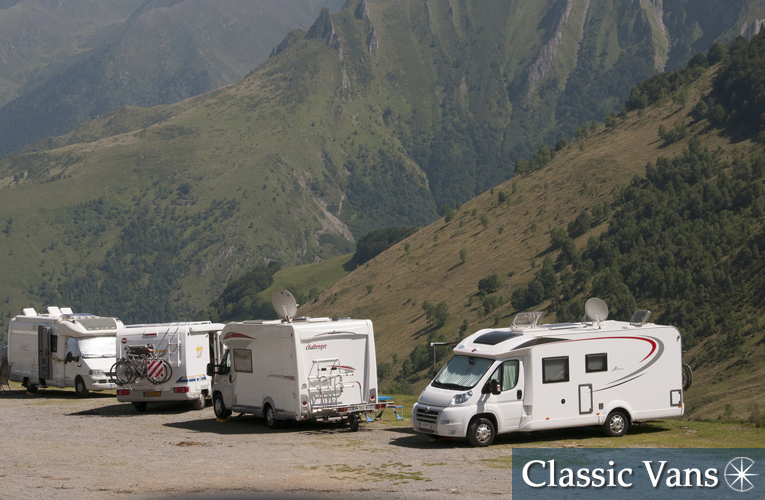Have you noticed a lot more campervans, camper trailers, RVs and motorhomes on the road lately?
No, you’re not crazy — many Americans with travel vehicles are taking to the highways in bigger numbers than ever before.
Public interest in the nomadic lifestyle made possible by campervans, motorhomes and RVs is at an all-time high—as evidenced by the popularity of the “Nomadland.” The film, which is about a woman in her 60s searching for work in the West while living out of her camper van, recently won Oscars for best picture, director and actress.
Beginning in 2016 and ballooning in a major way during the 2020 pandemic, a growing number of Americans have purchased travel vehicles—so much so that we’ve seen shortages in motorhomes, campervans and RVs (not to mention RV parts) across much of North America.
According to the RV Industry Association, new shipments of travel trailers and motorhomes are expected to hit their highest level on record in 2021, with projections showing about 533,356 units to be shipped to dealers and customers by year-end. That’s a nearly 24% increase over 2020’s numbers (430,412 units) and at least 5% above the last record set in 2017 (504,600 units).
Jeff Rutherford, President & CEO of Airxcel, Inc. and RV Industry Association Chairman, said this in an RVIA interview:
“A year ago, when RV plants shut down for nearly two months, who would have thought we would be talking about record-breaking shipments less than a year later. The fact that 2021 is projected to be the best year ever for RV shipments speaks to the strengths of our industry and the incredible appeal of the RV lifestyle.”
Who’s buying campervans, motorhomes and RVs?
While the RV industry demographic is wide-ranging, many camper companies are reporting that some of their most common customers are retired folks (seniors), women, millennials and — more recently — people who are enjoying their newfound freedom of working from home.
For example, while millennials make up 31 percent of the general population, they account for approximately 38 percent of campers, according to TheWanderingRV.com. However, the median RV owner in the U.S. is 48 years old.
What is causing the growing popularity of campervans, motorhomes and RVs?
Much of the latest boon in the RV industry, which has generally seen steady, reliable growth over the past 40 years (apart from the 2008-2010 recession), is attributed to several factors:
- The removal of supply constraints following the pandemic
- A multitude of RV manufacturers looking to expand their capacity, and
- Vigorous consumer demand for motorhomes and travel trailers.
What does this mean for folks interested in buying a campervan or motorhome?
One silver lining in the current state of tight RV inventory is that some people who jumped on the trend will put their rig up for sale in the coming year or two when normal travel patterns resume post-pandemic and they realize that the RVing lifestyle isn’t for them.
So if you’re in the market for a gently used, modern travel rig, hold tight because a lot of quality inventory may hit the market in the coming months and years.
What does this summer look like for RV, motorhome and campervan owners?
Most experts and industry insiders believe that busy campgrounds, low RV inventory and busy roadways will continue for several years to come. Longtime boondockers may notice an influx of new visitors at their favorite “getaway” spots.
And with more people being allowed to work from home, you are bound to see some of these folks turning to the full-time RV lifestyle.
With many campgrounds filling up this summer, we suggest that you keep calling and watching online reservation systems to see if you can squeeze in. A spur-of-the-moment trip can sometimes be the best kind, giving you and your family time away from the daily grind and reminding everyone just how good we have it in these modern times.

